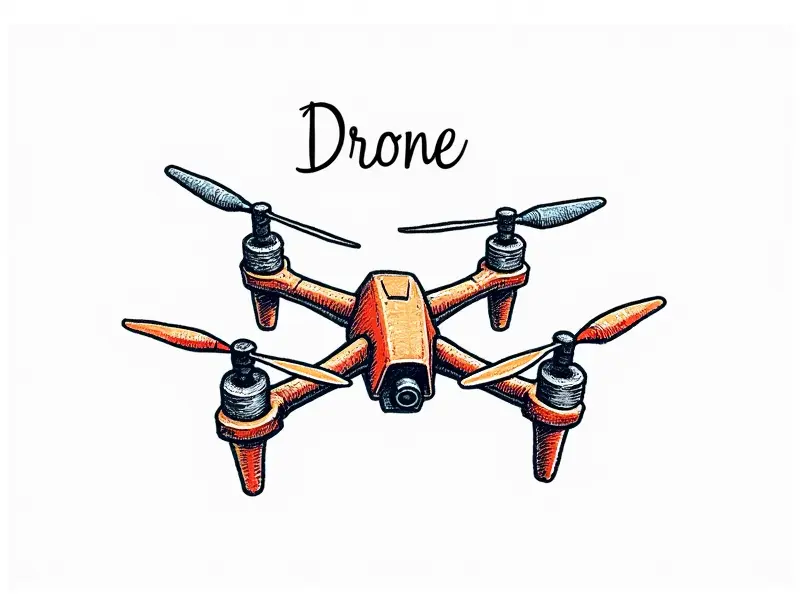What is propeller pitch?

Understanding Propeller Pitch in RC Drones
Propeller pitch plays a crucial role in the performance and efficiency of remote-controlled (RC) drones. The pitch of a propeller determines how much air it can push with each rotation, directly influencing factors such as lift, thrust, speed, and maneuverability. Understanding this concept is essential for both beginners and experienced hobbyists looking to optimize their RC drone's capabilities.
Why Propeller Pitch Matters in RC Helicopters
In the realm of RC helicopters, propeller pitch is equally critical as it affects flight characteristics such as hover stability, climb rate, and overall maneuverability. A higher pitch setting will generate more lift but may require more power to maintain control, whereas a lower pitch can provide better responsiveness at the cost of reduced vertical performance.
How to Choose the Right Propeller Pitch
Selecting the appropriate propeller pitch depends on several factors including the drone's intended use (e.g., aerial photography, racing, or general flying), motor specifications, and environmental conditions. For instance, a higher pitch might be suitable for high-speed applications like FPV racing, while a lower pitch could offer better performance in windy conditions.
- Consider the Motor: The motor's power output and efficiency should align with the propeller's pitch to ensure optimal performance without overloading the system.
- Flight Environment: Windy or high-altitude environments may necessitate a lower pitch for better control, whereas calm conditions might allow for higher pitches.
- User Experience: Personal preference and flying style can also influence the choice of propeller pitch. Some pilots prefer more responsive controls, while others prioritize stability and lift.
Propeller Pitch Explained: Quadcopter Performance
In quadcopters, propeller pitch significantly impacts overall performance by affecting thrust-to-weight ratios and maneuverability. A higher pitch can enhance speed but may compromise agility in tight spaces or during quick maneuvers. Conversely, a lower pitch offers better handling at the expense of reduced top speeds.
Adjusting Propeller Pitch for Optimal Lift
To achieve optimal lift with your quadcopter, consider adjusting the propeller pitch based on the specific mission requirements and environmental factors. For instance:
- Lift in Calm Conditions: A higher pitch can increase lift efficiency, allowing for longer hover times or improved vertical performance.
- Wind Resistance: In windy conditions, reducing the propeller pitch helps maintain control and stability by reducing the load on the motors.
Secrets of Fine-Tuning Propeller Pitch
Fine-tuning propeller pitch involves a balance between maximizing performance and maintaining system integrity. Here are some tips for achieving optimal results:
- Test Different Settings: Experiment with various pitch configurations to find the sweet spot that meets your specific needs.
- Analyze Flight Data: Use telemetry data or flight logs to monitor performance and identify areas for improvement.
- Consult Expert Advice: Engage with experienced pilots who can offer insights based on their own experiences and knowledge.
The Importance of Propeller Pitch
The importance of propeller pitch cannot be overstated, as it directly influences key aspects of flight such as lift generation, thrust production, and overall stability. By selecting the right pitch for your RC drone or helicopter, you can enhance performance, extend battery life, and achieve better control during critical maneuvers.
Effects of Propeller Pitch on Performance
The effects of propeller pitch are multifaceted and include:
- Lift Generation: Higher pitches generate more lift but may require increased motor power to maintain stability.
- Thrust Production: Propellers with higher pitches produce greater thrust, which is beneficial for high-speed applications like racing.
- Maneuverability: Lower pitch settings can improve responsiveness and agility in tight spaces or during rapid maneuvers.
Adjusting Propeller Pitch for Optimal Flight
To achieve optimal flight performance, consider the following adjustments based on your specific requirements:
- High-Speed Applications: Use higher pitch settings to maximize speed and efficiency in racing scenarios.
- Stability and Control: Opt for lower pitches to enhance stability and responsiveness during complex maneuvers or in challenging weather conditions.
Mastering Propeller Pitch Settings
Mastery of propeller pitch settings involves understanding the interplay between motor power, environmental factors, and desired flight characteristics. By carefully selecting and adjusting these parameters, you can optimize your RC drone's performance for any situation.
Propeller Pitch: Key for FPV Racing
In first-person view (FPV) racing, propeller pitch is a critical factor in achieving high speeds and agile maneuvers. A well-chosen pitch setting can provide the necessary thrust while maintaining control over rapid changes in direction and altitude.
Conclusion
Mastery of propeller pitch settings is essential for optimizing performance in RC drones and helicopters. By understanding how different pitches affect lift, thrust, and maneuverability, you can tailor your setup to meet specific mission requirements and environmental conditions. Whether you're a beginner or an experienced pilot, fine-tuning propeller pitch offers significant benefits in terms of efficiency, control, and overall flight experience.

